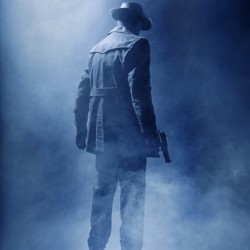From the International Collegiate Theatre Festival comes this inventive new rendition of Shakespeare’s classic play, Hamlet. The production is both all-encompassing and minimalist, aiming to condense the entirety of what is normally a three-hour play into less than half that time. What’s more, there are a mere three actors playing over ten roles, with few costume changes or props.
While incredibly impressive, the rollercoaster pace engendered by this ambition is perhaps also its biggest downfall. Watching these three females switch effortlessly between roles and deliver ream upon ream of Shakespearean dialogue for an hour and twenty minutes is both extraordinary and exhausting. On the one hand, the sheer memory skills involved are laudable; on the other, the breakneck pace demands that the lines are rattled off one after the other, leaving little room for acting smarts to shine through.
Indeed, it’s only when the speed drops slightly (such as during The Player’s or Hamlet’s monologues) that we can begin to see the talent on show. For the most part, the lines are simply barked at the audience, creating a jarring effect and stifling any aesthetic quality to the production. Having said that, the interplay of roles is deftly executed and adds a unique dimension to the play, without interfering with its message or causing undue confusion. The characters of Polonius, Rosencrantz and The Gravedigger are particularly well-handled and provide some much-needed comic respite from the proceedings.
As far as props are concerned, the three screens are employed well, with constant changes in position signalling different settings and contributing to the rollercoaster effect. However, the projections which beam upon them are often not strong enough to be discernible and the visions of Hamlet’s father’s ghost are particularly clunky. Improved attention to the lighting effects is needed in order to clarify the images and really maximise the potential of the screens as a dramatic tool.
What’s more, the space itself inhibits the quality of the play a little. Some seats are positioned behind the action, while others aren’t raised enough to give a full view of the stage. Moreover, the murmurs of the technical team are undoubtedly necessary to keep them all on the same page, but their box’s proximity to the audience means that the whispered communication is all too often audible and detracts from the action.
As a result, the play’s technical and logistical faults outweigh its artistic merits. There are some excellent ideas at work here and the cast acquits itself admirably, but circumstance and poor execution conspire to prevent the production from reaching its full potential.
